Our Story
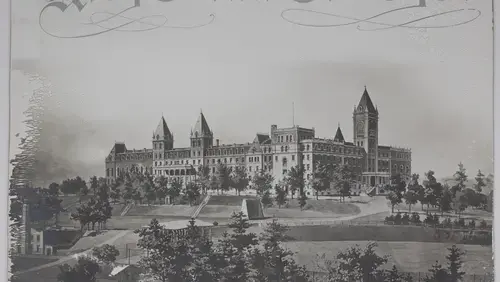
Through the evolution across three centuries, more than two dozen presidents and tens of thousands of students, the Jesuit mission has remained constant within the story of Holy Cross.
The journey of Holy Cross becoming the nation’s only exclusively-undergraduate liberal arts Jesuit college began in Spain in the 16th century when Saint Ignatius formed the Jesuits and the Society of Jesus.
Becoming Holy Cross
Nearly 500 years after Saint Ignatius formed the Jesuits and the Society of Jesus, Holy Cross uses Ignatian Jesuit ideals as the foundation for its teachings: to care for the whole person and leave the fragile planet in a better place than we found it.
From the beginning of his tenure as the second bishop of Boston, Benedict Joseph Fenwick S.J., wanted to establish a Catholic college within his New England diocese. He recognized a need to educate Catholics, who in great numbers, were fleeing religious persecution and famine, and seeking economic opportunity.
Other sites had been considered, but in Worcester, in 1836, Rev. James Fitton began an academy for boys on land that the Nipmuc tribe and other Indigenous people called home for centuries. The academy prospered but Father Fitton’s pastoral responsibilities in Worcester, Rhode Island, and Connecticut left him neither time nor energy to manage a boarding school. He left the property and buildings to Bishop Fenwick for his college.
Fenwick named the College in honor of the cathedral church in Boston, the Cathedral of the Holy Cross. The cornerstone was put in place on June 21, 1843. About four months later, on Nov. 2, the first classes were held with six students aged 9 to 19.
Holy Cross Through the Years
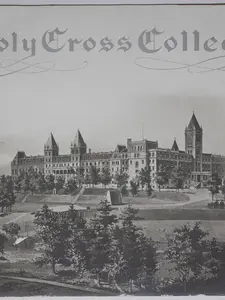
Archived sketch of Fenwick and O'Kane Hall.
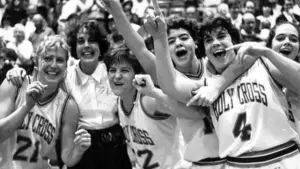
The 1991 Women's Basketball team celebrating at the Patriot League Championship.
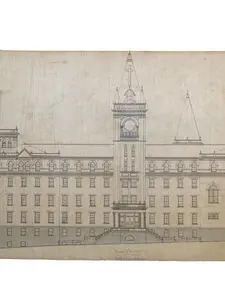
An architectural blueprint of Fenwick Hall.
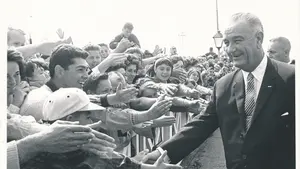
On June 10, 1964, President Lyndon B Johnson arrived at the Worcester airport to give the commencement speech at Holy Cross. Thousands of Worcester locals and students gathered at the airport to welcome Johnson, where he can be seen greeting them.
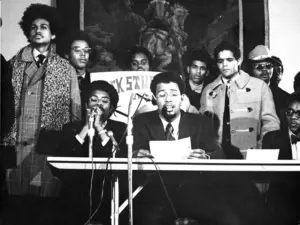
In December of 1969, the Holy Cross saw one of the largest student protests in its history. After a disproportionately high number of black students were suspended following a protest against General Electric recruiters on campus, around 60 Black and 50 white students walked out of campus. In this photo, alumnus Ted Wells, now a nationally renowned defense attorney, along with Black Student Union members, announced the 110 student walkout.
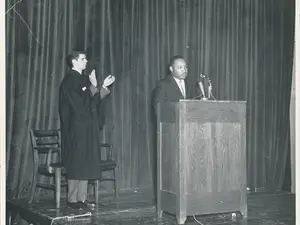
On November 19, 1962, Dr. Martin Luther King Jr. visited Holy Cross, with his wife Coretta Scott King, as a guest of the Cross & Scroll Society. Dr. King gave a speech addressed to a crowd of 1,500 students, faculty, and Worcester residents in the Fieldhouse, which is now known as The Jo.

Holy Cross marching band performing on campus.
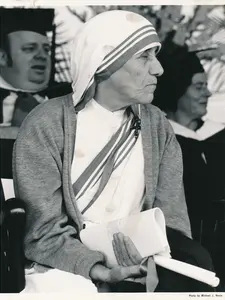
In 1976, Saint Mother Teresa received an honorary degree from Holy Cross in front of the first co-ed graduating class in the College's history.

Puppies make a visit to campus, and this Holy Cross student is taking advantage of the fun.
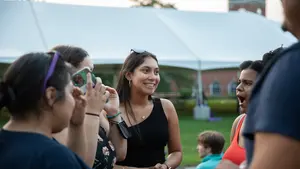
Students participate in the Odyssey program, which a transitional program offered by the Office of Justice, Equity, Belonging, and Identity (JEBI) for first-year students to engage in identity exploration, community building, and leadership development.
Confronting Our Past
Like dozens of other schools that were established in the early 19th century, Holy Cross received financial support from the profits generated by slavery. It received an undetermined amount from Georgetown University, which sold 272 enslaved individuals to help expand Jesuit education in the United States.
Holy Cross continues to research its beginnings as an institution and how it profited out the American slave trade. Holy Cross’ first valedictorian, James Healy, was born an enslaved individual under Georgia law. His father at 32, an Irish immigrant, purchased his mother, Mary Eliza, an enslaved woman, when she was 16.
James, who became the second Bishop of Portland, Maine, had four brothers, also legally enslaved individuals, who attended Holy Cross, including Patrick Healy, who today is known as “the second founder” of Georgetown University.
Neither the Healy brothers nor Holy Cross acknowledged their mother’s background and all identified as white students.
The Healy Brothers
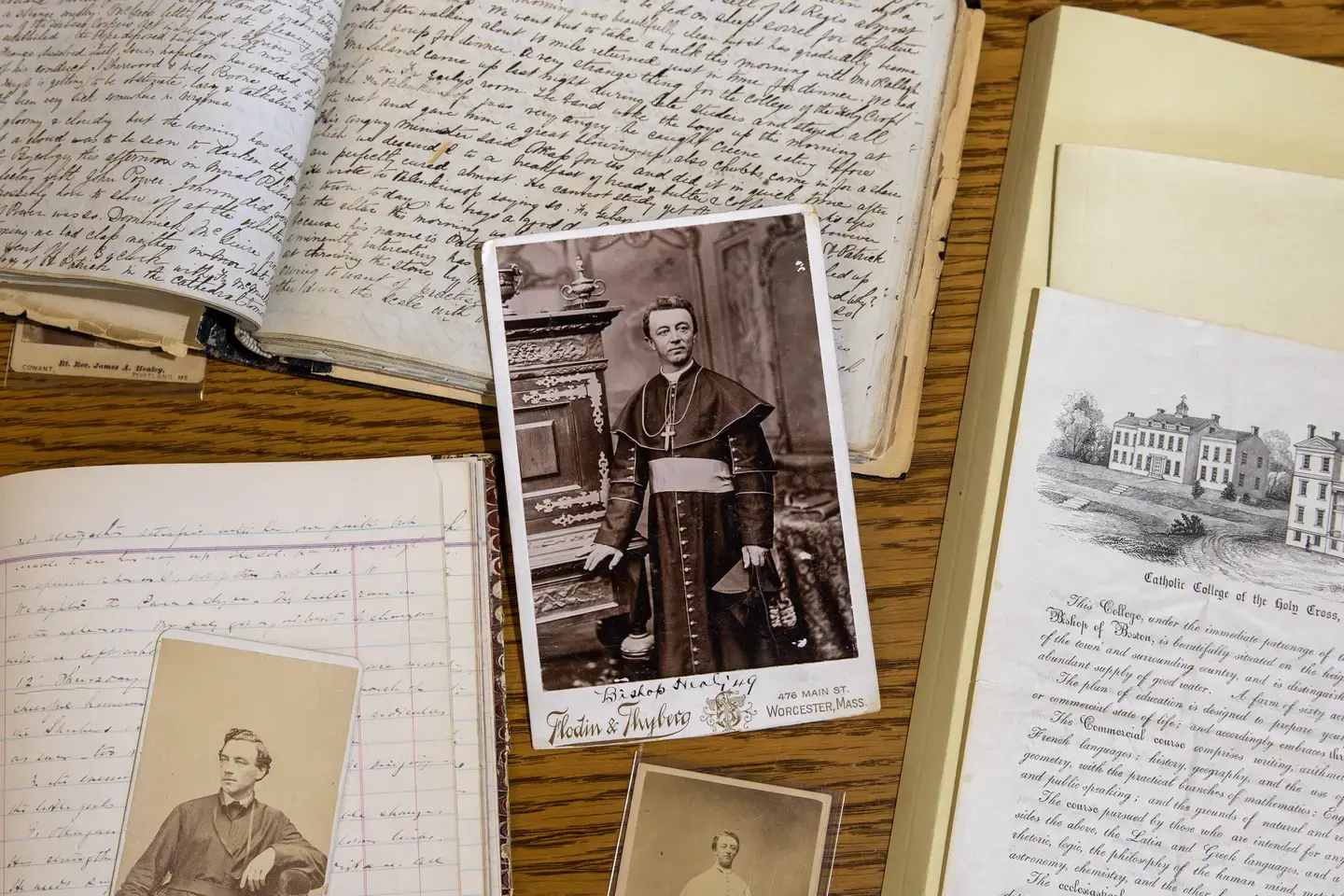
The beginnings of Holy Cross are intertwined with the contributions of all four Healy brothers, James, Patrick, Alexander and Michael, all graduates of the College.
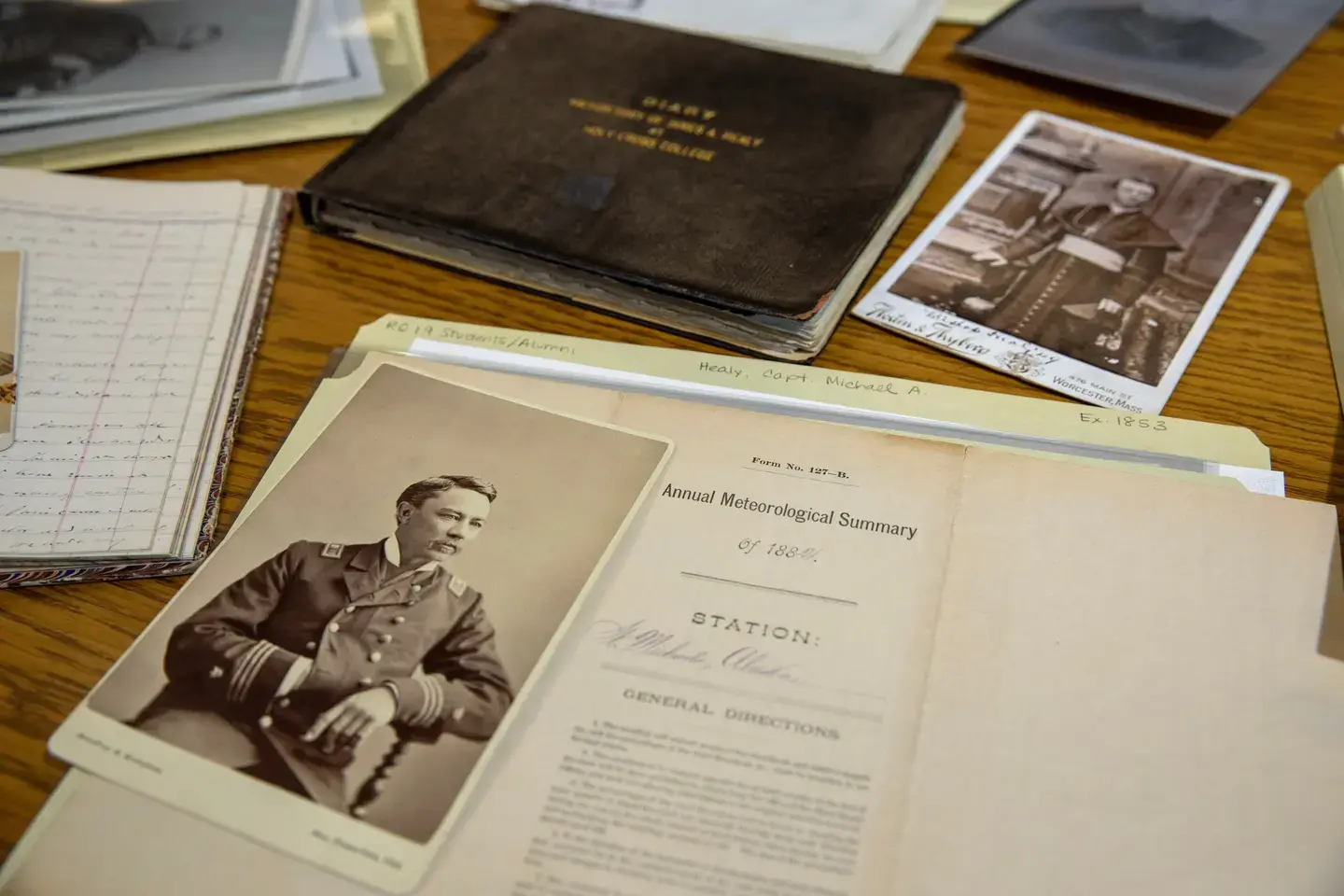
Hope After Tragedy
Within three years of opening its doors, enrollment at Holy Cross had increased to 100 students. In spite of very limited finances, the College began to grow until in the summer of 1852 a catastrophic fire destroyed Fenwick Hall.
Despite strong sentiments from the Jesuits to close Holy Cross after the fire, Bishop John B. Fitzpatrick, who had succeeded Bishop Fenwick, and Rev. Anthony F. Ciampi, S.J., the fourth president, lobbied and succeeded in keeping it open.
Funds were raised to rebuild the College, and in 1853, it opened for the second time. Still the College sat in a vulnerable position in more than $10,000 debt.
Following the fire, Patrick Healy, the brother of James Healy and who also graduated as a valedictorian from Holy Cross, donated $2,300 in 1855. It marked the largest gift in the institution’s history. It’s likely the funds came from his father’s estate, which included the sale of 51 individuals.
The gift along with many others allowed the College to continue to grow and finally gain a charter from the state. Petitions to secure a charter for the College from the General Court of the Commonwealth of Massachusetts were denied in 1847 for a variety of reasons, including anti-Catholic sentiment within the state. Without the charter, the College conducted its business and awarded it diplomas through the president of Georgetown.
Finally, with the support of Governor John A. Andrew, the Charter was granted on March 24, 1865.
Holy Cross Today
-
Always Growing
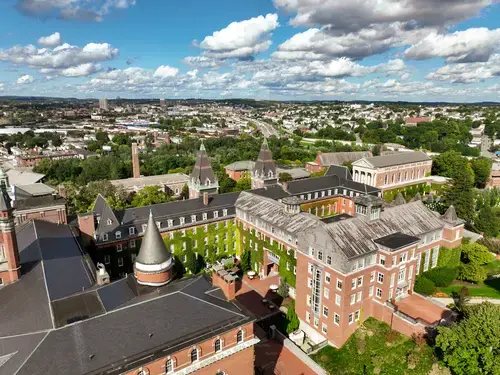
Today, the College spans more than 175 acres with an enrollment of more than 3,000 students and 300 faculty members from across the United States and abroad, offering more than 60 academic programs and concentrations.
-
Rooted in Jesuit Tradition
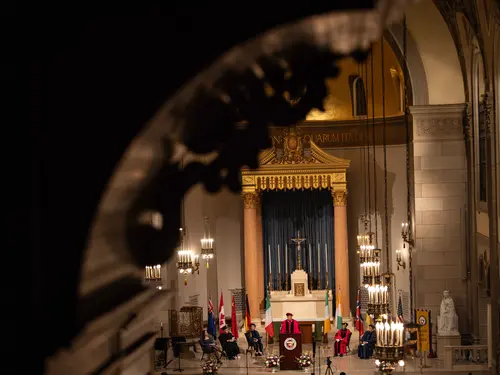
Faithful to its Jesuit tradition and character, the ideals play a central role in both scholarship and intellectual thought. The mission of educating people for others plays an important part in the curriculum and daily life of the College.
-
Measuring Success Through Morality
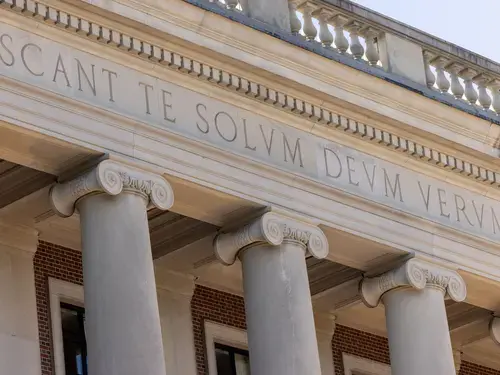
Holy Cross students are urged to measure their personal successes in life by what they have done to better the lives of others, especially those less fortunate than themselves.